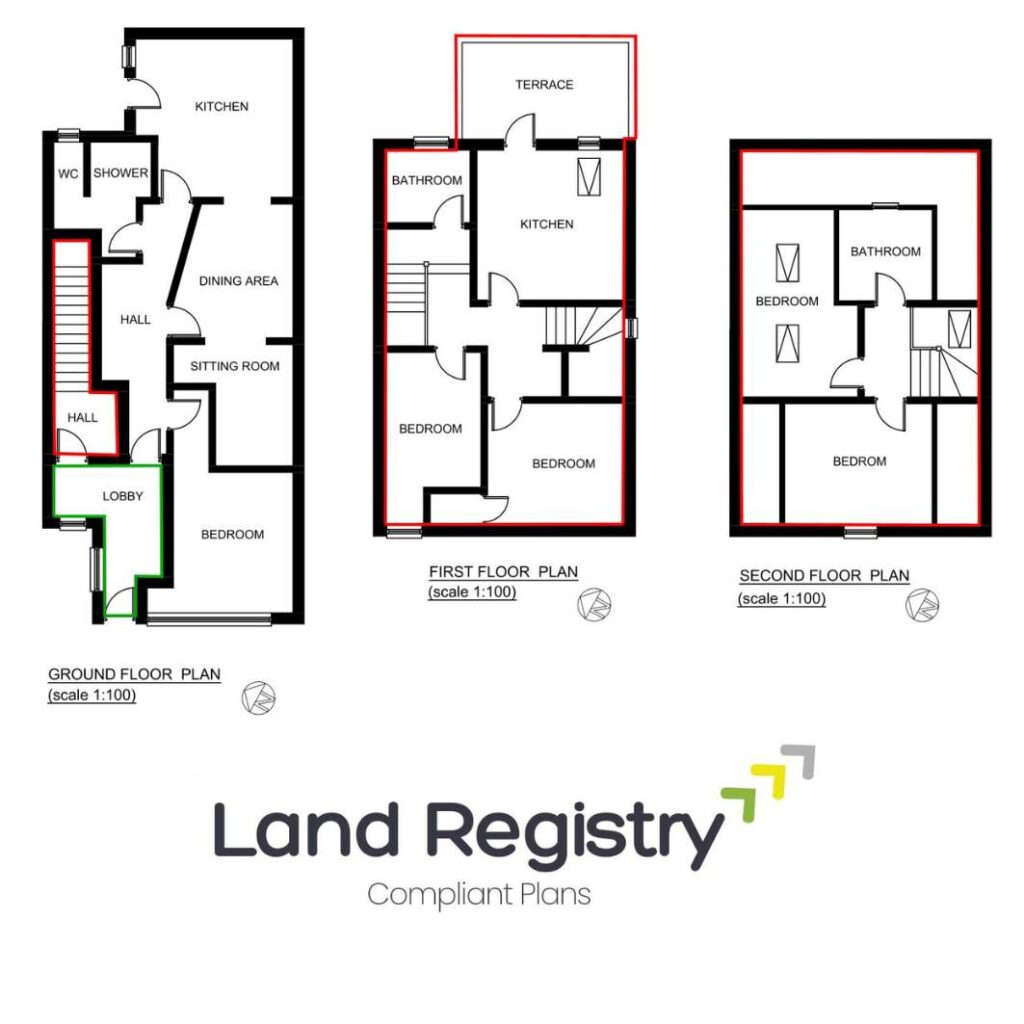The Land Registry Hub: Your Go-To Guide for Property Plans & Conveyancing
🛠️ Navigating the world of Land Registry, lease plans, title plans, and conveyancing can feel like a legal maze—but don’t worry, we’ve got you covered! Whether you’re a property owner, landlord, solicitor, or just someone trying to make sense of UK property rules, this blog is your one-stop resource for clear, practical advice.
From understanding lease plans to avoiding common conveyancing pitfalls, we break it all down in a way that’s easy to follow. Stay tuned for expert insights, tips, and updates to keep you ahead in the property game! 🏡📜✨

Land Registry Compliant Plans
Understanding Boundary Disputes and How Land Registry Plans Can Help
Boundary disputes can be a nightmare for property owners. Whether it’s a fence in the wrong place, a driveway overlap, or an argument over a shared path, these disputes can escalate quickly—sometimes even leading to legal action.
But here’s the good news: Land Registry Title Plans and accurate boundary surveys can help resolve most disputes before they turn into costly legal battles.
If you’re currently facing a boundary issue with a neighbour, or just want to clarify your property lines, this guide will explain how Land Registry plans work, how they can help in disputes, and what steps to take if disagreements arise.
What is a Boundary Dispute?
A boundary dispute occurs when two property owners disagree on where one property ends and another begins.
Typical causes include:
🚧 Fences, walls, or hedges placed in the wrong spot
🚗 Driveway or garden encroachments
🚶 Disputes over rights of way or shared access
🏗 Extensions, outbuildings, or structures built over a boundary
These disputes can happen between residential neighbours, businesses, or even local councils and homeowners.
How Can Land Registry Title Plans Help?
Many people assume that Land Registry Title Plans show exact boundaries—but that’s not entirely true.
📌 Title Plans provide a general indication of boundaries, based on Ordnance Survey (OS) mapping.
📌 They do not define the exact legal boundary—so the physical boundary may differ slightly from what’s shown on the plan.
📌 However, they can be a useful starting point in resolving disputes.
💡 Pro Tip: If you need an exact boundary line, you may need to apply for a Determined Boundary with HM Land Registry (more on that later).
Step 1: Check Your Land Registry Title Plan
The first step in any boundary dispute is to check your Land Registry Title Plan.
🔎 How to get your Title Plan:
1️⃣ Go to the HM Land Registry website (www.gov.uk/search-property-information-land-registry).
2️⃣ Enter your property details and download your Title Plan (£3 fee).
3️⃣ Compare the plan with your neighbour’s Title Plan (if available).
Look for:
✔️ How your boundary is marked (solid lines, dotted lines, etc.).
✔️ Any boundary agreements or restrictions noted on the title register.
✔️ How your property aligns with neighbouring properties and public roads.
Step 2: Compare the Title Plan with Physical Boundaries
Once you have your Title Plan, compare it with the actual property boundaries.
📍 Walk around your property and check:
✔️ Where fences, walls, or hedges are placed.
✔️ If your driveway, garden, or outbuildings match the plan.
✔️ Any potential overlaps or inconsistencies.
If there are discrepancies, this could be the root of your boundary dispute.
🚨 Warning: Title Plans are only a general guide—they are not legally definitive. If there’s a dispute, you may need a boundary survey to determine exact positions.
Step 3: Speak to Your Neighbour First
Before taking legal action, try to resolve the issue informally.
📌 How to approach your neighbour:
✔️ Stay calm and factual – Show them the Title Plan and discuss concerns.
✔️ Suggest a mutual boundary agreement – If both parties agree, a written agreement can prevent future disputes.
✔️ Consider mediation – If you can’t agree, a neutral third party can help.
Many disputes are caused by misunderstandings—a friendly conversation can often solve the issue without legal involvement.
Step 4: Get a Professional Boundary Survey
If the dispute continues, the next step is to hire a professional surveyor to measure and map the boundary.
🔎 What a boundary survey includes:
📏 Accurate measurements using GPS and land surveying equipment.
📜 A detailed report showing where the boundary lies in relation to Land Registry records.
🛠 Recommendations for correcting errors or updating boundaries.
💰 Cost: Expect to pay between £500 – £2,000, depending on the complexity of the case.
Step 5: Apply for a Determined Boundary (If Necessary)
If you want to officially confirm an exact boundary, you can apply for a Determined Boundary with HM Land Registry.
📌 How to apply:
1️⃣ Hire a chartered surveyor to create a precise boundary map.
2️⃣ Complete Form DB (Determined Boundary Application).
3️⃣ Submit to HM Land Registry with a £90 fee.
4️⃣ If your neighbour objects, you may need to resolve the dispute in the First-tier Tribunal (Property Chamber).
🚨 Warning: This process can take months and may lead to legal costs if disputes escalate.
Step 6: Legal Action as a Last Resort
If all else fails and your neighbour refuses to accept the correct boundary, you may need to take legal action.
⚖️ You can file a claim with the First-tier Tribunal (Property Chamber) for:
📌 Boundary disputes
📌 Encroachment issues (e.g., if your neighbour builds on your land)
📌 Access rights or easement disputes
💰 Legal costs can be high, so mediation is always a better first step before going to court.
How to Prevent Boundary Disputes in the Future
🛑 Avoiding boundary disputes is much easier than resolving them. Here’s how:
✔️ Check boundaries before buying a property – Always review the Title Plan and physical boundaries before purchasing land or a house.
✔️ Discuss plans with neighbours before making changes – If you’re planning to build a fence, driveway, or extension near a boundary, talk to your neighbour first.
✔️ Get agreements in writing – If you agree on a boundary change, create a formal boundary agreement and submit it to HM Land Registry.
✔️ Update plans if necessary – If a Title Plan is inaccurate, consider applying for a correction.
Final Thoughts: Don’t Let a Boundary Dispute Ruin Your Peace
Boundary disputes can quickly turn ugly, but most can be resolved through:
✅ Checking your Land Registry Title Plan
✅ Speaking with your neighbour
✅ Getting a professional boundary survey
✅ Applying for a Determined Boundary (if needed)
✅ Using mediation before legal action
If you’re unsure who is right, getting professional legal advice or hiring a surveyor is the best way to avoid expensive legal battles.
💬 Got a boundary dispute question? Drop it in the comments—we’re here to help! 📜🏡
Contact Us
Call Us : 01375 267 277
We are open from Monday to Friday
08.30 AM - 17.30 PM
Surv Essex Limited
Building 13 Thames Enterprise Centre
Princess Margaret Road
East Tilbury
RM18 8RH
Our Services
- Lease Plans
- Title Plans
- Conveyancing Plans
- Licencing Plans
- Retail Plans
Quick Links
- Home
- About Us
- Pricing Plan
- Team
- Blog
- Privacy Policy
- Terms & Service

